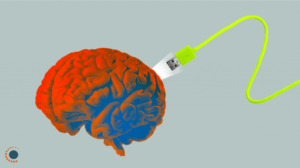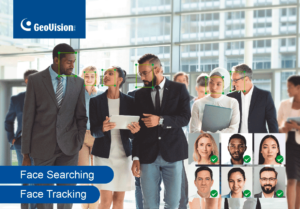
“There’s a lot of excitement around artificial intelligence (AI) today – and rightly so.”
AI is shifting the modern landscape of security and surveillance and dramatically changing the way users interact with their security systems. But with all the talk of AI’s potential, you might be wondering: what problems does AI help solve today?
The need for AI
The fact is, today there are too many cameras and too much recorded video for security operators to keep pace with.
On top of that, people have short attention spans. AI is a technology that doesn’t get bored and can analyze more video data than humans ever possibly could.
It is designed to bring the most important events and insight to users’ attention, freeing them to do what they do best: make critical decisions. There are two areas where AI can have a significant impact on video surveillance today: search and focus of attention.
Faster search
Imagine using the internet today without a search engine. You would have to search through one webpage at a time, combing through all its contents, line-by-line, to hopefully find what you’re looking for. That is what most video surveillance search is like today: security operators scan hours of video from one camera at a time in the hope that they’ll find the critical event they need to investigate further. That’s where artificial intelligence comes in.
“The ability of AI to reduce hours of work to mere minutes is especially significant when we think about the gradual decline in human attention spans.”

With AI, companies are developing technologies that are designed to make video search as easy as searching the internet. Tools like a sophisticated deep learning AI video search engines help operators quickly locate a specific person or vehicle of interest across all cameras within a site.
When a security operator is provided with physical descriptions of a person involved in an event, this technology allows them to initiate a search by simply selecting certain descriptors, such as gender or clothing color. During critical investigations, such as in the case of a missing or suspicious person, this technology is particularly helpful as it can use those descriptions to search for a person and, within seconds, find them across an entire site.
Focused attention
The ability of AI to reduce hours of work to mere minutes is especially significant when we think about the gradual decline in human attention spans. Consider all the information a person is presented with on a given day. They don’t necessarily pay attention to everything because most of that information is irrelevant. Instead, they prioritize what is and is not important, often focusing only on information or events that are surprising or unusual.
Security operators scan hours of video from one camera at a time in the hope that they’ll find the critical event they need to investigate further.
Now, consider how much information a security operator who watches tens, if not hundreds or thousands of surveillance cameras, is presented with daily. After just twenty minutes, their attention span significantly decreases, meaning most of that video is never watched and critical information may go undetected. By taking over the task of “watching” security video, AI technology can help focus operators’ attention on events that may need further investigation.
“As AI technology evolves, the rich metadata captured in surveillance video will add even more relevance to what operators are seeing.”
For instance, AI can continuously learn what typical activity in a scene looks like and then detect and flag unusual events, adding a new level of automation to surveillance.
This helps save time during an investigation by allowing operators to quickly search through large amounts of recorded video faster, automatically focusing their attention on the atypical events that may need further investigation, enabling them to more effectively answer the critical questions of who, what, where and when.
As AI technology evolves, the rich metadata captured in surveillance video – like clothing color, age or gender – will add even more relevance to what operators are seeing.
This means that in addition to detecting unusual activities based on motion, this technology has the potential to guide operators’ attention to other “unusual” data that will help them more accurately verify and respond to a security event.
The key to advanced security
There’s no denying it, the role of AI in security today is transformative. AI-powered video management software is helping to reduce the amount of time spent on surveillance, making security operators more efficient and effective at their jobs. By removing the need to constantly watch video screens and automating the “detection” function of surveillance, AI technology allows operators to focus on what they do best: verifying and acting on critical events.

“When integrated throughout a security system, AI technology has the potential to dramatically change security operations”
This not only expedites forensic investigations but enables real-time event response, as well. When integrated throughout a security system, AI technology has the potential to dramatically change security operations. Just as high-definition imaging has become a quintessential feature of today’s surveillance cameras, the tremendous value of AI technology has positioned it as a core component of security systems today, and in the future.
Adapted from Source Security



































































